Rendez-vous, clever use of AIS standards

Tender tracking systems, like the Nobeltec/Seetrac combo discussed here last year, are a bit exotic (even a bit mockable). But I’ve seen the captain of a big charter yacht worry over a ditzy guest out on a PWC, plus I see how over-the-top some mega yacht tenders are getting (like the Vikal Limo). In fact, when I was in the British Virgin Islands last spring, it seemed like every big, really fine center console I saw turned out to be the “little” boat often towed by one much bigger. In other words, tender tracking can be serious business, and I think the new SeaCas Rendez-vous system looks to be a powerful solution.
Here’s my recent writeup in PMY, and here’s Rendez-vous’s Web site. As noted this system cleverly uses standard AIS messages for the basic tracking function. In other words, any plotter or software that can plot AIS can privately plot a tender if a Rendez-vous radio is hooked to one its NMEA 0183 ports (the regular AIS frequencies are not disturbed at all). And applications that understand AIS safety messages, like Nobeltec Admiral above, will show a “pick me up” message being sent from “Jet Ski” using an optional button. However, Rendez-vous can also take in and transmit a lot of data that’s not included in the AIS scheme. To make use of it, a mother ship will use the company’s own software, as shown below (and bigger here), or …
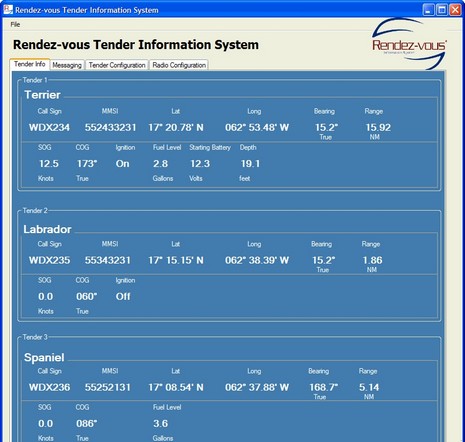
Or programs that have been adapted to Rendez-vous, like a coming version of Krill Systems monitoring software (below). Obviously it’s possible to send depth data from a tender back to the mother ship—something a lot of expedition-style cruisers would like to do—but I don’t know how it gets usefully displayed over a chart.
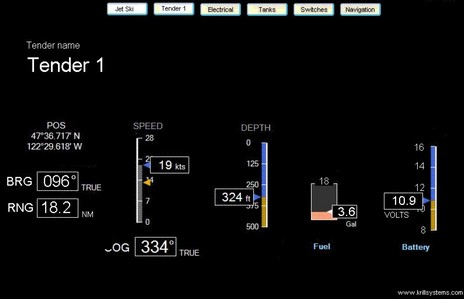


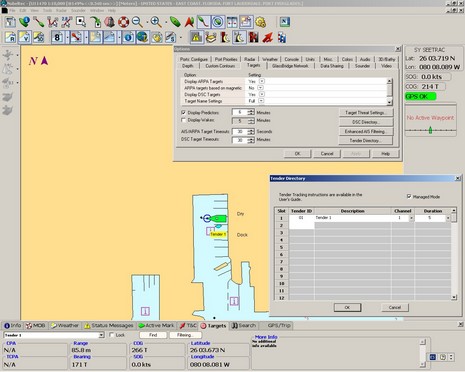
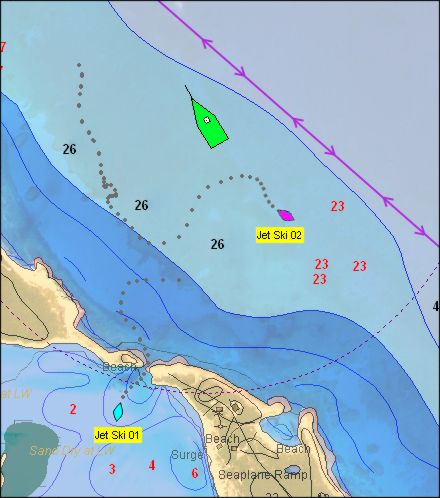
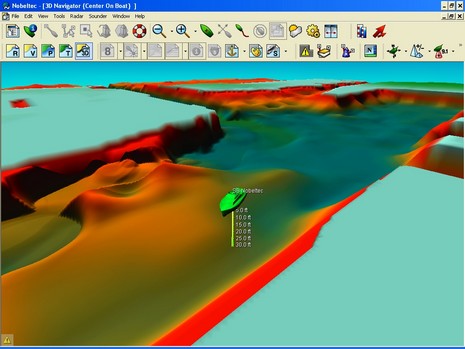








Here is how tender tracking and a “Pick-Me-Up” Alarm shows on Transas Navi-Sailor 3000 ECS-
http://www.rendezvoustenders.com/files/St_Kitts_v1.3.gif
Fred:
If I read that picture correctly, the JetSki has sent a safety – text AIS message to ALL STATIONS?
Surely it should have been an addressed message? Certainly, if I’d been anchored in the area, I wouldn’t have been happy to be receiving messages from some-one elses tender.
Del, this is not real AIS! The messages are only being sent and received by a particular private network of Rendez-vous equipped vessels and tenders. No regular AIS receiver in the area can see the jet ski or the safety message. Rendez-vous use AIS messages but not AIS frequencies.
The frequency used is a bit vague. The site mentions L-Band. I always took this to be in the 1 to 2 GHz region, but then it mentions VHF antennas and looking further mentions a license for 44.5MHz. this being in the low vhf Land Mobile allocation. Has Seacas bid on a block of channels in this range?
Also what happens when the fleet moves to the Caribbean for the season. The license isn’t going to be valid in other jurisdictions.
ooops! Sorry Ben, I seem to have got a bit confused there – however, if I can get confused by the display, will others too?
I’m a bit puzzled about the 44.5MHz frequency allocation – I’m not convinced it would be allowed in the UK.
I have to admit a sneaking admiration for the kit though, it’s a neat idea to hijack someone else’s display for your own purposes, but the price seems extortionate – I’m sure I could knock something up in one of the UK’s license-exempt bands that would do the job – lower power and shorter range, I’ll grant you, but much, much cheaper!
Rendez-vous customers are not required to obtain a license for the use of 44.5 MHz frequency in international waters.
The Rendez-vous frequency range (low-band VHF, 40-50MHz) can not be secured from the FCC for US waters as an exclusive license because there is no auction nor bid. However, SeaCAS LLC’s partner, MeteorComm (www.meteorcomm.com), owns a co-primary non-exclusive license to use the 44.5 MHz band for both fixed base and mobile stations.
It is not practical to register the frequency in every country that Rendez-vous customers may visit with their yacht. We rely on our customers to secure a mobile station 44.5 MHz frequency license for the countries they plan to visit. There are, however, a number of countries that do not require a license for a mobile station for this frequency.
looks like 44.5MHz is in the middle of a military band in Europe – probably unwise to use it over there unless you want a visit from the local marines / paras / SAS etc…..
Now that data transmissions are allowed on the FRS band, wouldn’t that provide a cheaper (if range restricted) alternative carrier?